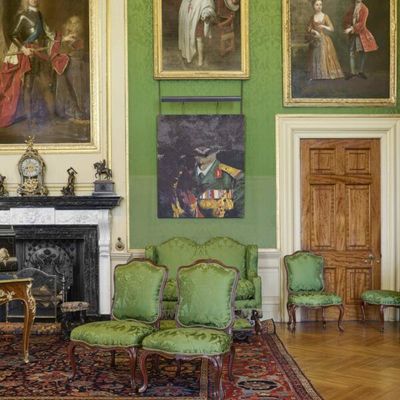Where do science and art collide? Who decided to pull them apart?
Leonardo da VInci saw no distinction of moving between art and engineering, designing helicopters and painting masterpieces. We see baby steps locally with some art collaboration in the science festival and more recently the UK-wide festival of creativity with a wider collaboration between art and science.
Still we have nothing that touches the Luma Foundation locally. Based in Arles, France, the foundation is located in a building designed by star architect Frank Gehry. The Luma Foundation was founded in 2004 to support contemporary artistic creation and is funded by Swiss billionaire Majo Hoffman.
Its remit includes visual art, publishing, photography, documentary films and multimedia. Its interest spans across environment, human rights, education and culture. Twice a year it holds Luma Days where workshops and talks on the key issues of the day spark ideas and debate. Artist residencies are an established part of its annual programme.
The atelier is also researching how agricultural and construction waste from a fifteen mile radius can be used for building materials for the refurbishment of their new building. Innovations developed in the atelier have been used in the Frank Gehry building including salt panels for walls and sunflower pulp for panelling.
The project has been built over 24.7 acres of wasteland in the heart of Arles in the south of France, reviving an old railroad repair yard. The National Commission of Historical Works rejected the first design for the Frank Gehry Tower in 2011 but approved the reworked design in 2012.
ARLES: Gehry's shining cathedral
Most of the buildings in the city are as flat as the region but the fact that the architect's buildings are a magnet for visitors is helping to transform Arles. The location now holds a number of exhibition spaces and a phosphorescent skatepark as well as innovative workshop spaces. A public park designed by Bas Smets costing 5.3 million Euro around the buildings is an amazing transformation of a derelict train yard. It houses a lake and some manicured lawns but largely consists of rambling paths and hills with local trees. The architect says ultimately it will be shaped by the wind.
Natural materials produced from local salt, sunflowers and algae have been used on the interior of Frank Gehry's Arles tower.https://t.co/0J84siZ1ce
— Dezeen (@dezeen) July 14, 2021
I was very interested in the 'atelier' Luma which you could visit on a tour where 20 people innovate. These include designers, artists, biologists, engineers, farmers, philosophers, sociologists and activists mingling and working together. From this have sprung algae summits. The atelier is also researching how agricultural and construction waste from a fifteen mile radius can be used for building materials for the refurbishment of their new building. Innovations developed in the atelier have been used in the Frank Gehry building including salt panels for walls and sunflower pulp for panelling.
The Ghery tower itself is confusing. Visitors walk around looking puzzled, it holds a number of artists' archives underground and has a number of changeable exhibition spaces. Phillippe Parreno's 'Danny/No More Reality' is the most disconcerting, featuring artificial intelligence, algorithmic technology, censors on the roof, and ripples in a pond. The viewer is welcomed to sit on a revolving circular seating mechanism and as the environment changes with movement, sound and reflection everything in the room changes and moves. A robotic arm whizzes across the roof collecting data, You are left feeling that technology is increasingly taking over our daily lives.
BEST of the WEEK: Frank Gehry’s Luma Arles to open its doors in June#architecture #artscenter https://t.co/HnWGZ6kLpk pic.twitter.com/IHguvCeVtP
— AAsArchitecture (@aasarchitecture) March 21, 2021
Other artworks are part of the building. Carsten Hollers' part-art-part-funfair slides would not look out of place in Andersonstown Leisure Centre but you do not have to get wet to go on them. There is also an experimental library of the future which Carnegie could never imagine.
Locally and globally, it makes sense to put together innovators across disciplines in order to tackle our challenges and make the best use of resources. Artists often get left out of these cross-discipline discussions and pushed into the margins. It is worth noting that one of the proposals for the disused railway site was for apartments and retail. This cultural development of the disused space will have far-reaching effects, both on the city and on the environment. Just knowing such a place exists helps us imagine new possibilities. Now all Belfast needs is a benevolent billionaire.
At the RUA 140th Annual Exhibition in the Ulster Museum in Belfast is my Isle of the Golden Cow (painting & collage). Show’s up till January. #bóvember pic.twitter.com/yjsR8uyvAk
— Gavin Lavelle (@GavinLavelle) October 30, 2021
Closer to home in Belfast the Royal Ulster Academy annual exhibition has opened in the Ulster Museum, along with a return of Colin Davidson's epic Silent testimony, book a free ticket online. All Belfast Galleries open late Thursday night.






